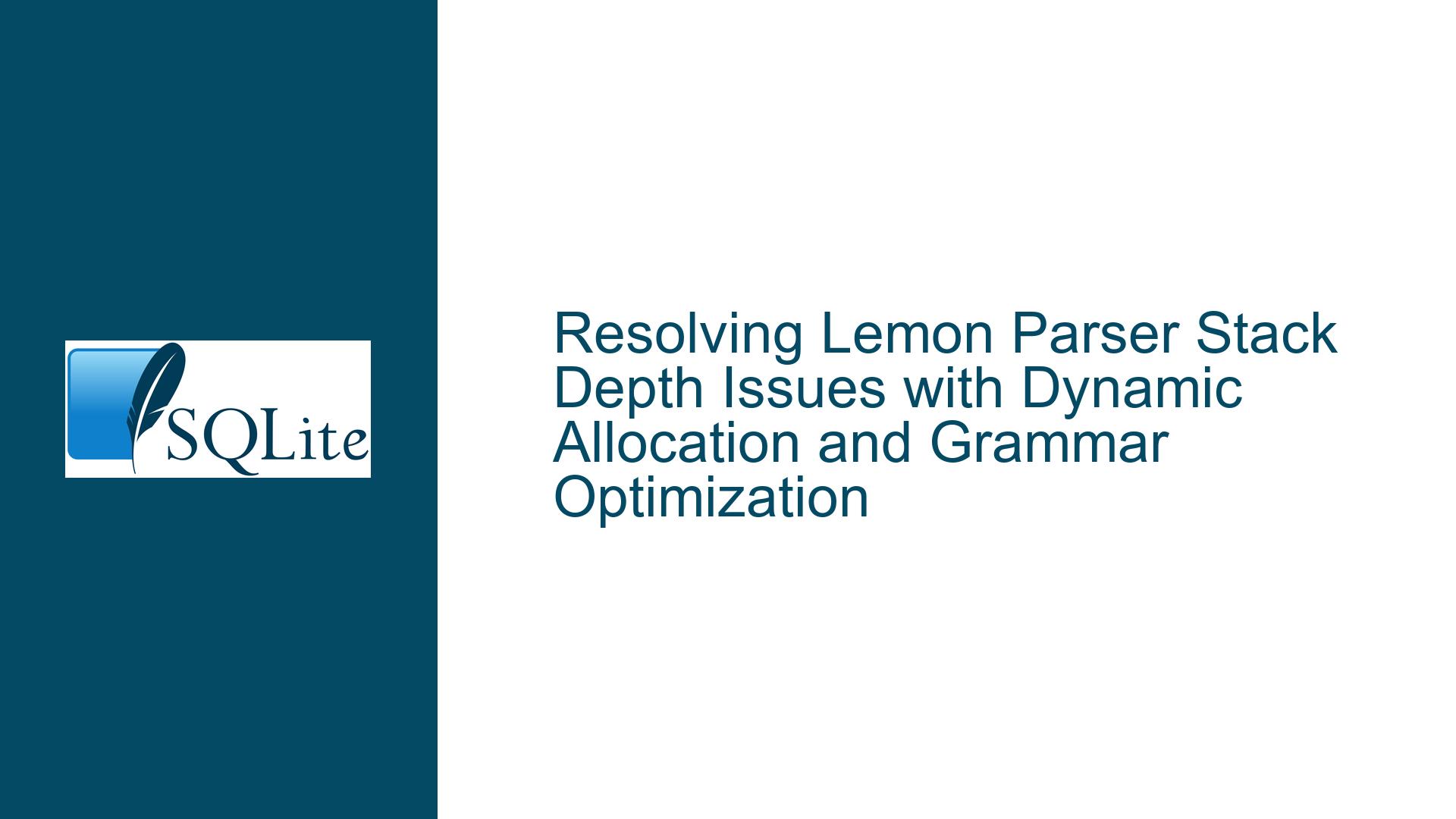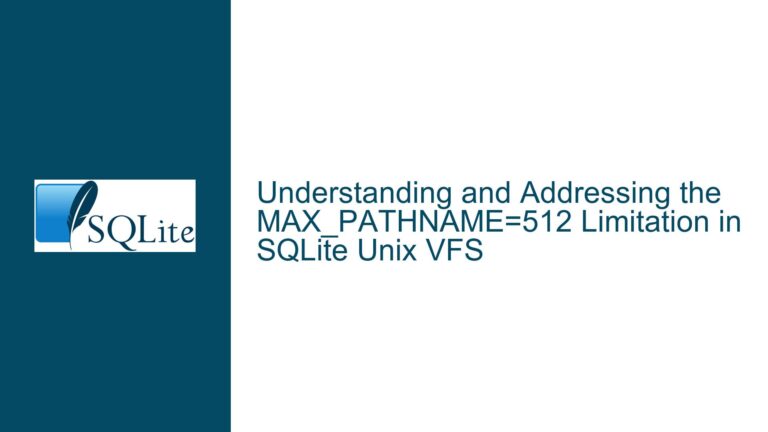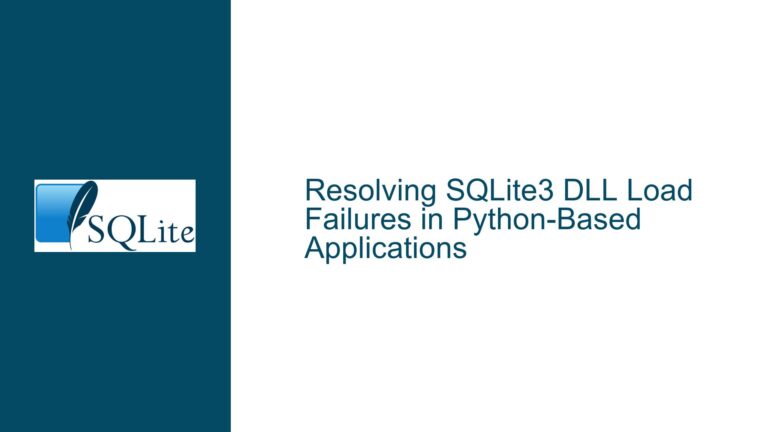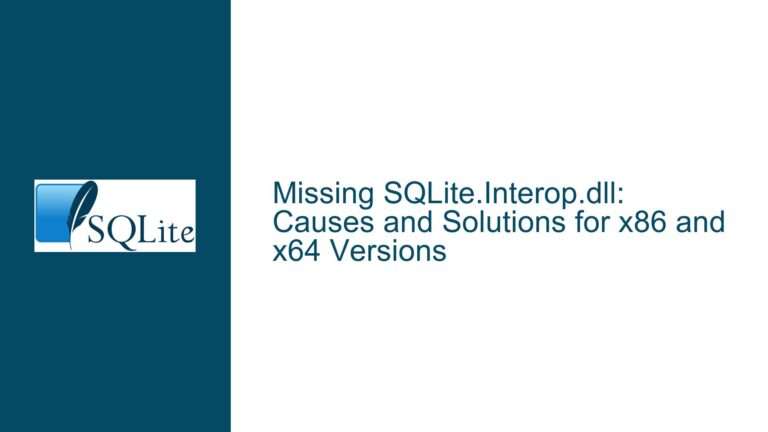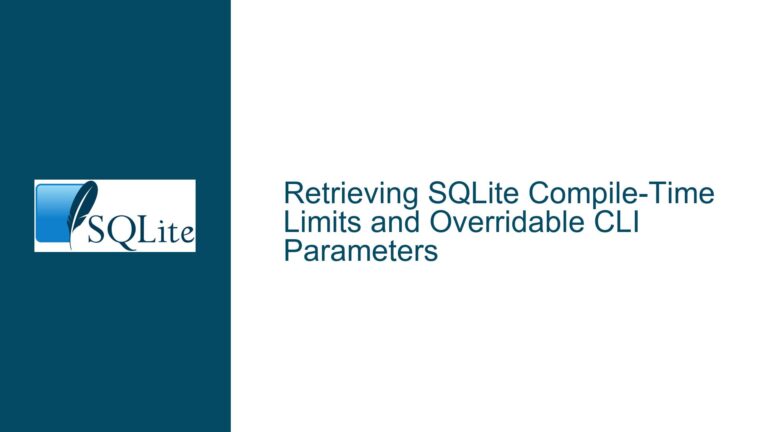Resolving Lemon Parser Stack Depth Issues with Dynamic Allocation and Grammar Optimization
Lemon Parser Stack Depth Limitations and Dynamic Allocation
The Lemon parser generator, a tool integral to the SQLite project, employs a fixed stack depth (YYSTACKDEPTH) by default. This stack depth is crucial for managing the parser’s state during the parsing of input files. However, when dealing with grammars that utilize deep right recursion, this fixed stack depth can become a bottleneck. The stack depth must often be proportional to the size of the input file, especially in cases where the grammar involves extensive right-recursive constructs.
The default behavior of Lemon is to allocate a fixed-size stack at compile-time, which can lead to stack overflow errors if the input file exceeds the expected depth. This limitation is particularly problematic for developers who need to parse large or deeply nested inputs. The issue is exacerbated when the grammar is designed in a way that necessitates right recursion, as this can lead to a linear growth in stack depth relative to the input size.
To address this, Lemon provides a compile-time option (-DYYSTACKDEPTH=0) that allows the stack to grow dynamically using realloc(). This feature, while not extensively tested outside of SQLite’s use cases, is designed to handle scenarios where the stack depth cannot be predetermined. By setting YYSTACKDEPTH to zero, the parser will dynamically resize its stack as needed, ensuring that it can handle inputs of arbitrary depth without encountering stack overflow issues.
However, the dynamic stack allocation feature is not without its caveats. The implementation relies on the realloc() function, which can introduce performance overhead due to frequent memory reallocations. Additionally, the dynamic resizing mechanism is only available in the latest versions of Lemon, and older versions may not support this feature. Developers must ensure they are using a version of Lemon that includes the dynamic stack allocation code, which can be found in the lempar.c file within the SQLite source tree.
Grammar Design and Recursion: Left vs. Right Recursion
The choice between left and right recursion in grammar design has significant implications for the performance and stack depth requirements of a parser. In the context of LALR(1) parsers, such as those generated by Lemon, the type of recursion used can dramatically affect the parser’s behavior.
Left recursion is generally preferred in LALR(1) parsers because it allows the parser to reduce the stack immediately after encountering a recursive rule. This results in a shallower stack depth, as the parser can reduce the stack incrementally rather than waiting until the end of the recursion. For example, a left-recursive grammar rule for parsing a list of items might look like this:
list ::= list COMMA item.
In this case, the parser can reduce the stack after each item is parsed, keeping the stack depth proportional to the nesting depth rather than the total number of items.
In contrast, right recursion can lead to a deeper stack depth, as the parser must shift all items onto the stack before performing any reductions. A right-recursive version of the same grammar rule would look like this:
list ::= item COMMA list.
Here, the parser must shift each item onto the stack until the recursion ends, at which point it performs all the reductions in one go. This can lead to a stack depth that is proportional to the total number of items, which is problematic for large inputs.
However, there are cases where right recursion is necessary. For example, when parsing constructs that require a right-deep abstract syntax tree (AST), such as certain types of mathematical expressions or list constructions, right recursion may be the only viable option. In these scenarios, the parser must maintain a deep stack to correctly build the AST, and dynamic stack allocation becomes essential.
Implementing Dynamic Stack Allocation and Optimizing Grammar Rules
To implement dynamic stack allocation in Lemon, developers must ensure they are using a version of Lemon that supports this feature. The dynamic stack allocation code is located in the lempar.c file, specifically around line 295, where the realloc() function is used to resize the stack as needed. Developers should compile Lemon with the -DYYSTACKDEPTH=0 flag to enable this feature.
Once dynamic stack allocation is enabled, the parser will automatically resize its stack to accommodate the input depth. However, developers should be aware of the potential performance implications of frequent realloc() calls. In some cases, it may be beneficial to preallocate a larger initial stack size to minimize the number of reallocations.
In addition to enabling dynamic stack allocation, developers should also consider optimizing their grammar rules to minimize stack depth. This can be achieved by favoring left recursion over right recursion where possible and by restructuring grammar rules to reduce nesting depth. For example, instead of using right recursion to parse a list of items, developers can use left recursion combined with post-processing to achieve the same result with a shallower stack.
Consider the following example of a left-recursive grammar rule for parsing a list of items:
list ::= item.
list ::= list COMMA item.
In this case, the parser can reduce the stack after each item is parsed, keeping the stack depth proportional to the nesting depth. If the resulting AST needs to be right-deep, developers can post-process the AST to rearrange the nodes after parsing is complete. This approach avoids the need for a deep stack during parsing while still achieving the desired AST structure.
For cases where right recursion is unavoidable, developers should ensure that the parser is configured to use dynamic stack allocation. This will allow the parser to handle deeply nested inputs without encountering stack overflow errors. Additionally, developers should test their grammars with a variety of input sizes to ensure that the parser performs well under different conditions.
In summary, resolving stack depth issues in Lemon parsers involves a combination of enabling dynamic stack allocation and optimizing grammar rules to minimize stack depth. By understanding the trade-offs between left and right recursion and leveraging the dynamic stack allocation feature, developers can create robust and efficient parsers capable of handling complex inputs.
Performance Considerations and Best Practices
When using dynamic stack allocation in Lemon parsers, developers must consider the performance implications of frequent memory reallocations. Each call to realloc() can introduce overhead, especially if the stack needs to be resized multiple times during parsing. To mitigate this, developers can preallocate a larger initial stack size using the YYSTACKDEPTH macro. For example, setting -DYYSTACKDEPTH=1000 will allocate an initial stack size of 1000 elements, reducing the likelihood of frequent reallocations.
Another best practice is to profile the parser with representative input files to identify potential performance bottlenecks. By analyzing the parser’s behavior under different conditions, developers can fine-tune the initial stack size and identify opportunities for further optimization. For example, if the parser frequently resizes the stack during the early stages of parsing, increasing the initial stack size may improve performance.
In addition to performance considerations, developers should also ensure that their grammars are well-structured and free from unnecessary complexity. Complex grammars with deeply nested rules can lead to increased stack depth and reduced parser performance. By simplifying grammar rules and minimizing nesting depth, developers can create more efficient parsers that are easier to maintain and debug.
Finally, developers should be aware of the limitations of Lemon and consider alternative parser generators if their requirements cannot be met. While Lemon is a powerful tool with a proven track record in the SQLite project, it may not be the best choice for all use cases. Developers should evaluate their specific needs and consider factors such as grammar complexity, input size, and performance requirements when choosing a parser generator.
Conclusion
The Lemon parser generator is a versatile tool that can be adapted to handle a wide range of parsing tasks. By understanding the limitations of fixed stack depth and leveraging dynamic stack allocation, developers can create parsers capable of handling complex and deeply nested inputs. Additionally, by optimizing grammar rules and considering performance implications, developers can ensure that their parsers are efficient and robust. Whether parsing simple lists or complex mathematical expressions, Lemon provides the flexibility and power needed to tackle even the most challenging parsing tasks.
